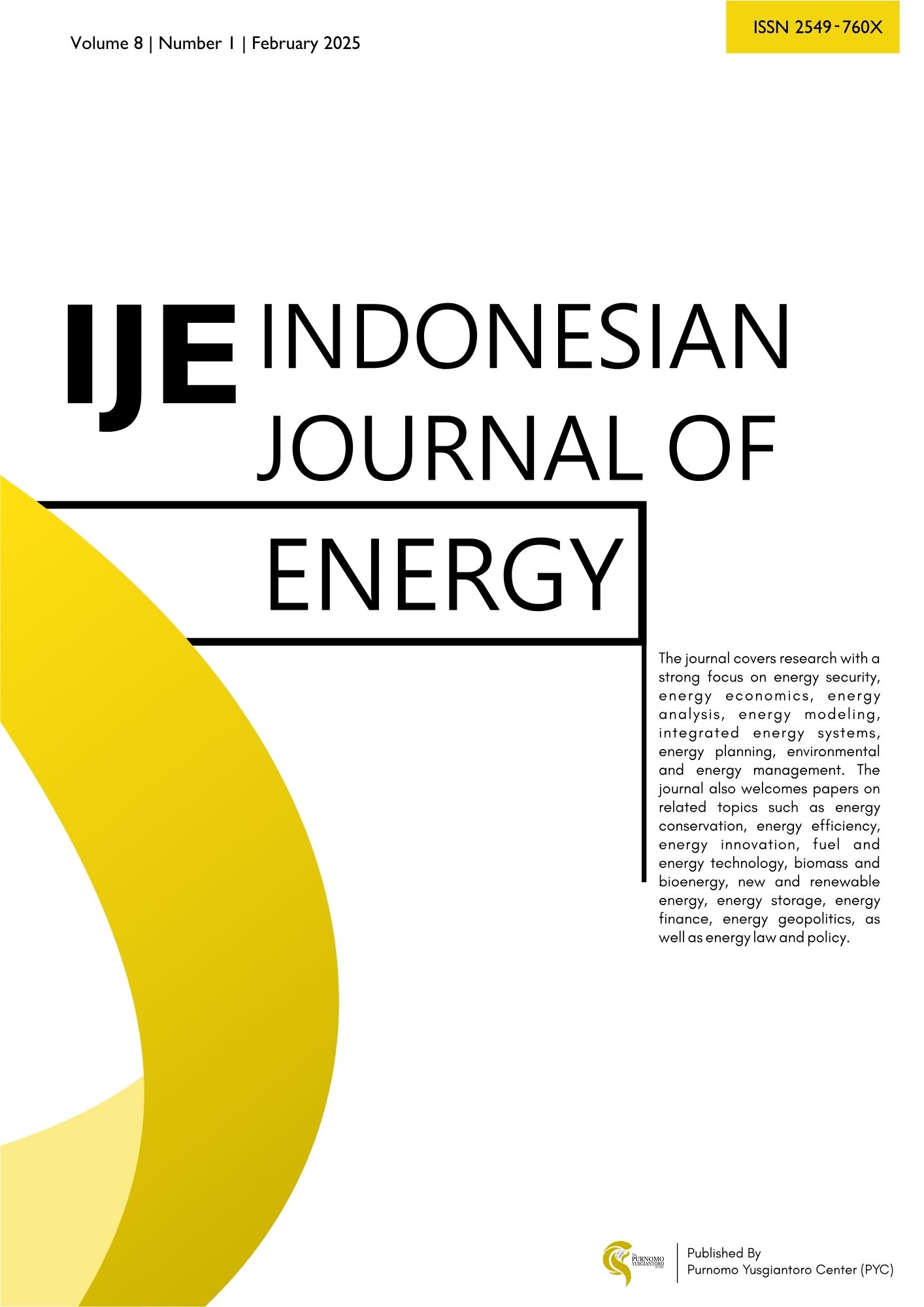Regional Inclusive Green Growth in Indonesia
Unraveling Determinants and Disparities
Abstract
This research develops a regional framework for inclusive green growth in Indonesia and assesses the efficiency of government expenditure in driving it. Using cross-sectional data from 33 provinces in 2021, the study constructs an Inclusive Green Growth Index (IGGI) based on economic growth, social equity, and environmental sustainability, following the Asian Development Bank’s framework. Data Envelopment Analysis (DEA) is employed to evaluate government spending efficiency. This study fills a research gap by providing a standardized tool to measure economic inclusivity and sustainability at the regional level. Additionally, it introduces a novel approach by analyzing budget efficiency in promoting inclusive green growth across provinces. Findings reveal significant regional disparities, with Papua and Nusa Tenggara Barat lagging while Kalimantan Timur and DKI Jakarta lead. Inefficient government spending is identified as a key factor, though some regions, such as East Kalimantan and East Java, demonstrate better resource utilization. This research contributes by encouraging local governments to integrate IGGI into policy planning. The index helps the central government identify regional disparities and formulate equitable development strategies. Additionally, it emphasizes optimizing government financing for inclusive and sustainable economic programs, providing insights for improving policy effectiveness.
Downloads
References
Abou Zahr Diaz, M., Alawiyeh, M. A., & Ghaboura, M. (2019). Depletion of the Land Resources and Its Effect on the Environment. In S. Glagolev (Ed.), 14th International Congress for Applied Mineralogy (ICAM2019) (pp. 443–444). Springer International Publishing. https://doi.org/10.1007/978-3-030-22974-0_107
Aznar-Márquez, J., & Ruiz-Tamarit, J. R. (2016). Environmental pollution, sustained growth, and sufficient conditions for sustainable development. Economic Modelling, 54, 439–449. https://doi.org/10.1016/j.econmod.2016.01.017
Badan Nasional Penanggulangan Bencana. (2024). Indeks Risiko Bencana Indonesia. https://inarisk.bnpb.go.id/irbi
Badan Pusat Statistik. (2024). Statistik Indonesia 2024 (No. Publikasi 03200.24003). https://www.bps.go.id/id/publication/2024/02/28/c1bacde03256343b2bf769b0/statistik-indonesia-2024.html
Badan Pusat Statistik. (n.d.). Gini Ratio in March 2023 was 0.388. https://www.bps.go.id/en/pressrelease/2023/07/17/2035/gini-ratio-in-march-2023-was-0-388-.html
Chotia, V., & Rao, N. V. M. (2017). Investigating the interlinkages between infrastructure development, poverty and rural–urban income inequality: Evidence from BRICS nations. Studies in Economics and Finance, 34(4), 466–484. https://doi.org/10.1108/SEF-07-2016-0159
Dogaru, L. (2021). Green economy and green growth—Opportunities for sustainable development. Proceedings, 63(1), Article 1. https://doi.org/10.3390/proceedings2020063070
Farida, N., Suman, A., & Sakti, R. K. (2021). Fiscal decentralization, economic growth, and regional development inequality in Eastern Indonesia. Journal of Indonesian Applied Economics, 9(2), Article 2. https://doi.org/10.21776/ub.jiae.009.02.1
Iek, M., & Blesia, J. U. (2019). Development inequalities in autonomous regions: A study pre-and post-special autonomy in Indonesia’s most Eastern provinces. The Journal of Asian Finance, Economics and Business, 6(1), 303–314. https://doi.org/10.13106/jafeb.2019.vol6.no1.303
Jha, S. (2018). Inclusive green growth index: A new benchmark for quality of growth. Asian Development Bank. https://www.adb.org/publications/inclusive-green-growth-index
Kementerian Lingkungan Hidup dan Kehutanan. (2023). Statistik KLHK. https://statistik.menlhk.go.id/sisklhkX/data_statistik/ppkl/table5_10
Li, M., Zhang, Y., Fan, Z., & Chen, H. (2021). Evaluation and research on the level of inclusive green growth in Asia-Pacific region. Sustainability, 13(13). https://doi.org/10.3390/su13137482
Liu, Z., Li, R., Zhang, X. T., Shen, Y., Yang, L., & Zhang, X. (2021). Inclusive Green Growth and Regional Disparities: Evidence from China. Sustainability, 13(21). https://doi.org/10.3390/su132111651
Nugraha, A. T., & Prayitno, G. (2020). Regional Disparity in Western and Eastern Indonesia. International Journal of Economics and Business Administration, VIII(4), 101–110. https://doi.org/10.35808/ijeba/572
Otoritas Jasa Keuangan. (2023). Statistik Perbankan Indonesia. https://ojk.go.id/id/kanal/perbankan/data-dan-statistik/statistik-perbankan-indonesia/Default.aspx
Putra, H. D. (2022). Energy Transition in the Kalimantan Power System. Delft University of Technology.
Sihombing, P. R. (2019). Does the Gap Between East and West Still Exist? A Study of Indonesia’s Disparities. Udayana Journal of Social Sciences and Humanities, 3(1), 1–8. https://doi.org/10.24843/UJoSSH.2019.v03.i01.p01
Sukwika, T. (2018). Peran Pembangunan Infrastruktur terhadap Ketimpangan Ekonomi Antarwilayah di Indonesia. Jurnal Wilayah dan Lingkungan, 6(2), 115–130. https://doi.org/10.14710/jwl.6.2.115-130
Sun, Y., Ding, W., Yang, Z., Yang, G., & Du, J. (2020). Measuring China’s regional inclusive green growth. Science of The Total Environment, 713, 136367. https://doi.org/10.1016/j.scitotenv.2019.136367
Wahyuni, T. (2021). Strengthening Role and Policy of Local Government in Accelerating Development of Social Forestry in East Kalimantan. In Joint Symposium on Tropical Studies (JSTS-19) (pp. 382-387). Atlantis Press.
World Bank. (2023). World Bank Annual Report 2023: A New Era in Development. https://documents.worldbank.org/en/publication/documents-reports/documentdetail/099092823161580577/BOSIB055c2cb6c006090a90150e512e6beb
Wu, Y., & Zhou, X. (2021). Research on the Efficiency of China’s Fiscal Expenditure Structure under the Goal of Inclusive Green Growth. Sustainability, 13(17). https://doi.org/10.3390/su13179725
















